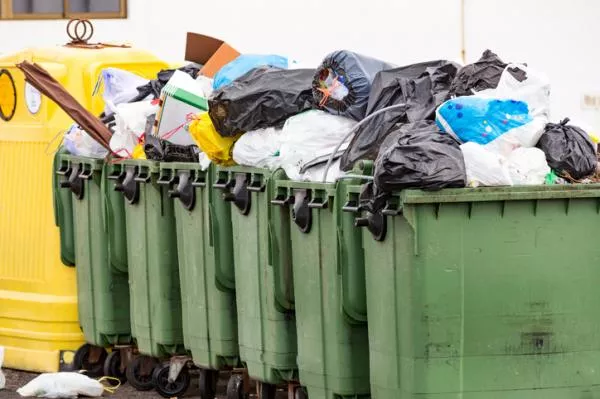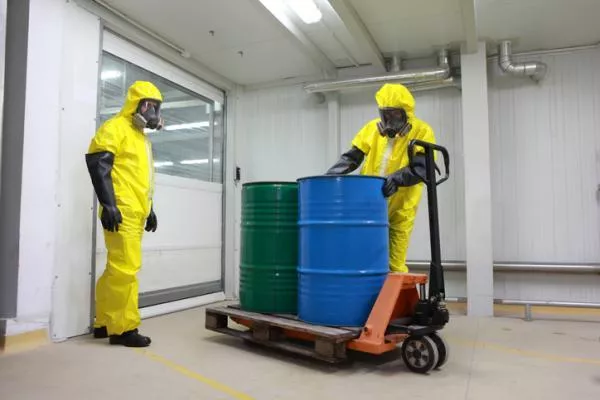
Most of the waste is generated by the human being, this is due to the great consumption of products that we have every day. The excessive growth of waste is being a problem for our planet, that is why a management of these is established, encouraging their reuse and recycling, betting on clean technologies to treat them, expanding services and through educational campaigns towards citizens.
If you are interested in learning more about this topic, this article by Ecologist Verde will delve into what is waste management, the types that are, as well as the techniques used to treat them.
Definition of waste management and its phases
What is the management of the waste we produce? We can give the definition of waste management as the process in which different activities intervene, all necessary, to put a solution to all the waste generated. There are 3 main ones phases of waste management:
- Recover and collect waste: For this, containers are used in which the waste must be deposited and depending on the country and its management system, more or fewer containers are used to classify them and the colors may vary. For example, there are countries where there are containers for plastic, for paper, for organic waste, for glass, among others.
- Transport waste: In this phase, the waste is transported by trucks to the classification or treatment plants.
- Waste treatment: In this last phase of management, the waste undergoes different treatments depending on its origin using different techniques.

Types of waste management
The waste management classification it is based, mainly, on the origin of these. Thus, depending on the origin of the waste, its management can be classified into:
- Management of urban solid waste.
- Hazardous waste management.
- Sanitary waste management.
- Industrial waste management.
We recommend you learn more about the different types of garbage with this other post.
Urban solid waste management
The municipal solid waste They are that are generated in homes. These include electrical appliances, cleaning products, furniture, packaging, debris, etc. The management of these refers to procedures related to the collection, separation, treatment, recycling and final deposit of waste. The collection of waste can be global or selective, the latter classifies the waste depending on its composition to later be recycled (plastic, glass, paper) or receive a specific treatment.
Here you can learn more about what solid waste is and how it is classified.

Hazardous waste management
This management encompasses all those processes that undergo waste classified as dangerous or very dangerous for health and the environment. For their management, a series of rules are followed from their collection, classifying them according to various criteria, then they go through chemical and physical treatments to convert them into inert substances and are left in reinforced tanks to reduce their danger. Some examples of hazardous waste are:
- Explosives
- Flammable
- Carcinogens.
- Sensitizers.
- Irritants
In this other post we explain everything about hazardous waste: classification, examples and management.

Sanitary waste management
Medical waste or hospital waste has a high biohazard, so its handling is very important. During the management of healthcare or hospital wasteThese must be classified and stored correctly and specific measures must be used for their destruction, in order to reduce or eliminate the high danger they pose to the environment and health. The waste must be delivered to companies that are accredited for their transport to where they are disposed of.

Industrial waste management
Are those waste that comes from production processes of industries. For the industrial waste management, the companies that generate the waste must keep them in optimal conditions until a manager collects them, to be transported and receive their treatment and recycling. Some of the treatments used are physical, chemical, biological or thermal.
Know better what industrial waste is, its types, classification and management in this other article that we propose.

Waste management techniques
Are different techniques used for the management and treatment of waste, in this section we will talk about some of them:
- Landfill deposit.
- Recycling.
- Incineration.
- Pyrolysis and gasification.
- Composting and methanization.
Landfill deposit
All the garbage generated is deposited in the landfillsThese are usually located in areas far from urban centers and many of them are illegal. If the landfill is well managed and designed it is an economical and hygienic option to accumulate garbage. The problem is that there are old landfills that do not have a good design or even many of them are illegal, posing this a danger to the environment.
Here we tell you much more about what landfills are, their types and consequences.

Recycling
Recycling is intended to recover discarded materials to give them a new use as a product. To do this, they use specific containers for each material discarded. For the waste management through recycling, the person who generates the waste has the responsibility of classifying it and depositing it in its container and later the waste is transported to their corresponding recycling plants. For example, plastic, glass and paper are three materials that can be recycled.
These are the different types of recycling to manage waste.

Incineration
This technique is very practical for the elimination of waste and, in addition, it generates electrical energy and heat. However, it is very polluting due to the emissions of polluting substances that are generated into the atmosphere, since with it the waste is subjected to high temperature to burn it.

Pyrolysis and gasification
They are two techniques that are performed applying a heat treatment to the waste, that is, these are heated in tanks that are completely sealed and with little oxygen. On the one hand, pyrolysis converts waste into liquid and gaseous products that can be burned again producing energy, in addition to obtaining new products by refining them or, with solid products, active carbon can be obtained. But nevertheless, gasification it is used to produce energy.

Composting and methanization
Composting is done for break down organic waste, such as animal and plant remains, slurry and excrement, through aerobic decomposition, that is, in the presence of oxygen thanks to aerobic bacteria. As a product of this process, fertilizer is obtained that can be used in agricultural activities. Here we explain more about this process and How to make homemade compost so that you make the most of the organic waste in your home.
You can also do another decomposition process called methanization, which is done without the presence of oxygen.

What is a waste management plan
It is a document in which the productive or industrial companies must indicate the conditions and the means that are going to be carried out for waste management during all production activities. The waste management plan It must contain an estimate of the waste that will be generated, as well as the cost of the management. Installation plans, the type of waste that will be generated, how they will do it and other necessary information are also included. All the information in the document must be reviewed by professionals in order to obtain the necessary authorizations to start the productive activity.
What is a waste management study
The waste management study is a document in which the correct way of managing the waste generated is developed depending on its nature.
Waste management regulations
There are many rules and laws that are established to carry out proper waste management, these exist at different levels. Depending on the area in which we live, the management is governed by some rules and others. In this article some waste management standards At the European level, some of the state-level regulations in force in Spain will also be shown, as well as making reference to some at the regional level.
European regulations
- Directive 2008/98 / CE of the European Parliament and Council of November 19, 2008.
- Directive 2004/12 / CE of the European Parliament and of the Council of February 11, 2004.
State regulations
- Law 11/2012, of December 19, on urgent measures in the field of the environment.
- Law 22/2011 of July 28 on waste and contaminated soils.
Autonomous regulations
- Junta de Andalucía. Ministry of the Environment and Spatial Planning. Waste and Material Resources.
- Government of Navarra. Integrated Waste Management Plan. Legislation.
If you want to read more articles similar to What is waste management, we recommend that you enter our Recycling and waste management category.


